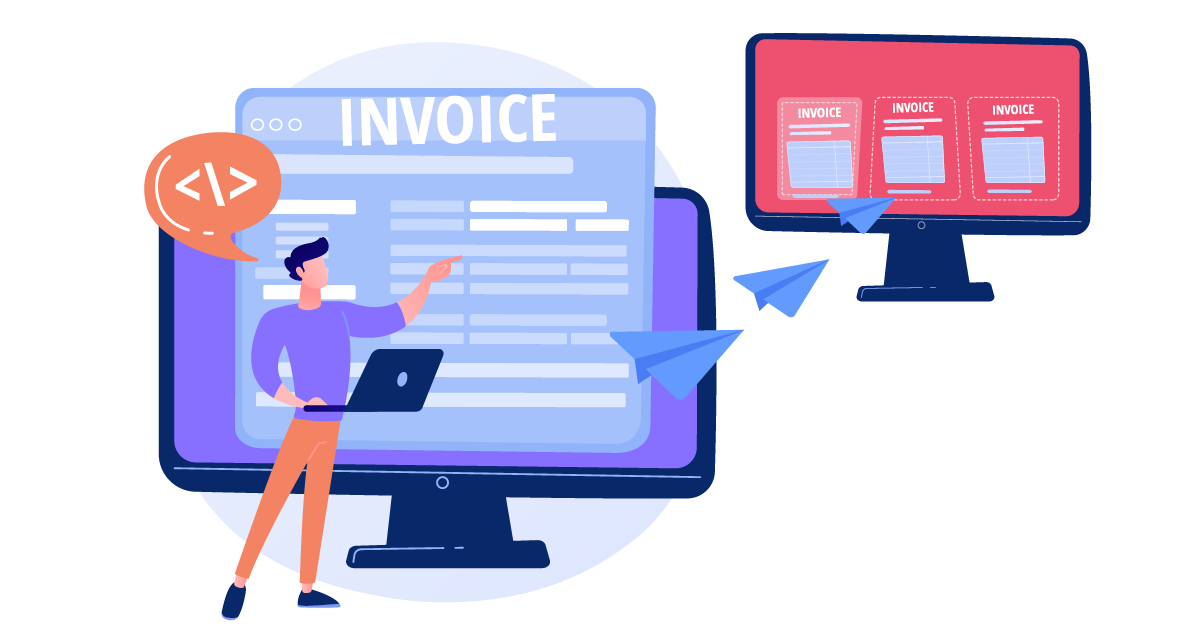3 min read
From post-audit to clearance model: what does this mean for compliance?
![]() Anoek van der Riet
23-May-2023 11:46:40
Anoek van der Riet
23-May-2023 11:46:40

More and more countries around us are exchanging the post-audit model for the clearance model or some other form of continuous transaction controls (CTC). This has implications for the way companies must prepare, send, process and retain invoices. How do you stay compliant?
National governments miss out on a huge amount of VAT revenue every year. To illustrate, in 2020 this VAT gap, that is, the difference between what they should collect in VAT and what they actually collect, was 93 billion euros in Europe. And that's still modest compared to the year before. In fact, in 2019, European countries missed out on as much as 124 billion euros. According to the European Commission, the difference between the two years is mainly due to the corona pandemic.
There are a number of reasons why governments lose so much VAT revenue. These include VAT fraud and evasion, bankruptcies and financial insolvency, as well as miscalculations and administrative errors.
One of the ways governments hope to reduce the VAT gap is through the entry of continuous transaction controls (CTC). Forms of this method have been used in Latin America and the Asia Pacific region for some time, and it is beginning to gain a foothold in Europe as well.
Difference between post-audit model and Continuous Transaction Controls
Currently, most countries, including the Netherlands, still use the so-called post-audit model. How does the post-audit model work? In principle, companies may send and receive their invoices in any way they wish. The laws and regulations focus mainly on how and how long invoices should be stored. This is because companies file their VAT returns afterwards in one go and can also be audited afterwards in one go, during an audit. At that time, the company must be able to show all invoices. So in short; compliance actually plays a role mainly afterwards.
With continuous transaction controls, it's a different story. In this case, in fact, the control happens in real time at the invoice level rather than after the fact, all at once. This means the government is watching every invoice exchanged between customer and supplier.
France is on track to implement such a continuous transaction controls system, in which the invoice is still sent directly from supplier to customer, but both parties must register the transaction with an accredited service provider (in French: plateforme de dématérialisation partenaire).
|
Because compliance is not just about following laws and regulations, it has strategic value. Read more in the blog: |

|
What is the clearance model?
A specific form of continuous transaction controls is the clearance model. In the clearance model, invoices are not sent directly from supplier to customer; they must first be sent to the government. Only after the government has registered this invoice, validated it and provided it with an authorization code, can the invoice be forwarded to the customer.
In 2019, Italy was the first EU country to implement this model with the introduction of the Sistema di Interscambio.
In the clearance model, invoices must first be sent to the government for verification
E-invoicing mandatory under Continuous Transaction Controls
Post-audit models offer companies a lot of freedom in how they send and receive invoices. As long as they take care to store invoices correctly for an audit, you can still get away with a PDF there.
Unlike the post-audit model, continuous transaction controls do involve regulations and technical specifications on how invoices should be exchanged. After all, every invoice must pass through the government's system. This is why e-invoicing is mandatory in countries with continuous transaction controls. This means that if your organization does business with a company in a country with continuous transaction controls, you must also be able to send and/or receive e-invoices.
|
What are the benefits of e-invoicing? E-invoicing makes it easier for the government to control the flow of VAT money. But there are more benefits of e-invoicing, including for yourself, such as: > Sending and receiving invoices faster and more efficiently |
|
E-invoicing rules differ by country
However, the specific requirements to comply with mandatory e-invoicing vary by jurisdiction. In addition, there is still a maze of formats and standards for e-invoices. Unfortunately, there is no one standard way that applies globally or Europe-wide.
Companies with international operations must decide for themselves how to address this patchwork of rules and obligations. Ensuring compliance can therefore be quite challenging for internationally operating companies. Especially with the prospect of more and more countries making, or at least considering making, the move to continuous transaction controls and mandatory e-invoicing.
For example, Belgium, Spain, Poland, Latvia, Slovakia, Slovenia and Romania already have advanced plans. In the Netherlands, the possibilities are currently being examined and weighed against each other. We, like the majority of countries, are also expected to follow suit in the coming years with some form of continuous transaction controls and a requirement for e-invoicing.
A reliable e-invoicing partner such as ICreative can help you be and stay compliant. We are aware of all the different rules, formats, standards and networks and can relieve you of all your worries regarding e-invoicing. Want to know more?
Then contact us or read all about compliance in the free white paper 👇
Free whitepaper: Compliance anno 2023
 Compliance is perhaps more important and more complex than ever. In fact, compliance is gaining strategic value for organizations, but it is not exactly getting easier.
Compliance is perhaps more important and more complex than ever. In fact, compliance is gaining strategic value for organizations, but it is not exactly getting easier.
What is currently going on in the compliance field? What challenges are there? How can you improve compliance in your organization?
You can read about it in the free white paper
Compliance in 2023: opportunities and challenges.









